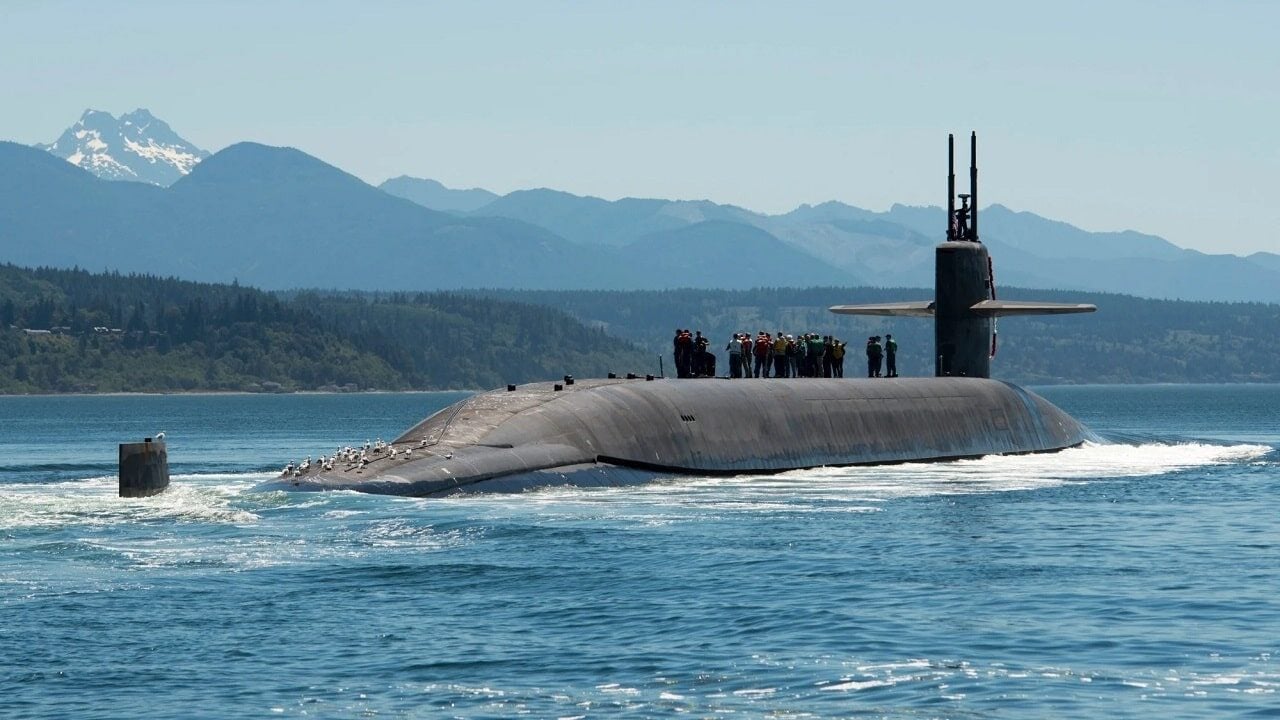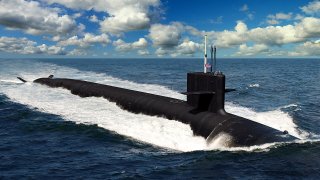Columbia-Class: The Submarine the U.S. Navy Is Desperate For
Beginning in 2031, the U.S. Navy will replace each of the retiring Ohio-class subs with a new Columbia-class SSBN. The program's goal is to build a dozen of the new nuclear-powered submarines, and those boats will continue to support the U.S. strategic deterrent mission.
Why the Columbia-Class Submarine Is So Important to the U.S. Navy - In August, the United States Department of Defense (DoD) announced that it was instituting a forward-leaning, whole-of-department approach to accomplishing its top priority of maintaining the world's foremost nuclear deterrence capability.
The Pentagon further acknowledged that its 2022 Nuclear Posture Review identified the modernization of the U.S. nuclear arsenal as a top priority in maintaining a strong nuclear deterrence.
That modernization effort will be carried out over the next two decades, and it will include initiatives to modernize all three legs of the nuclear triad. Specific platforms have been identified, including the Northrop Grumman B-21 Raider long-range strategic bomber, which will replace the B-2A Spirit and B-1 Lancer; while the Sentinel intercontinental ballistic missile system will replace the Minuteman III.
Then there are the U.S. Navy's Ohio-class ballistic missile submarines (SSBNs) – and the four boats that were modified to cruise missile submarines (SSGNs). The 14 SSBNs, which together carry about half of the U.S. active strategic thermonuclear warhead, were first deployed in 1981 and will start to reach the end of their respective service between 2027 and 2040 – at a rate of one boat per year.
However, over the past two years, the Navy has determined that it would be possible to extend the service life of five of its Ohio-class submarines by two to three years each so that the SSBN force would remain at 12 vessels or more for all but three years between 2024 and 2053.
Out With the Ohio-class
Beginning in 2031, the U.S. Navy will replace each of the retiring Ohio-class subs with a new Columbia-class SSBN. The program's goal is to build a dozen of the new nuclear-powered submarines, and those boats will continue to support the U.S. strategic deterrent mission.
Originally known as the Ohio Replacement Program (ORP) or SSBN(X), until 2016, the lead boat of the class (SSBN-826) will be named in honor of the District of Columbia, while the second sub of the class will be named USS Wisconsin (SSBN-827).
Second Most Expensive Pentagon Program
The U.S. Navy will spend around $132 billion for the procurement of the dozen submarines, while the total lifecycle cost for the entire class is estimated at $347 billion. That figure includes all projected costs to develop, buy, and operate the 12 submarines through 2042.

In its Fiscal Year 2019 (FY19) request, Navy officials asked for $3.7 billion for the Columbia-class program – a 97 percent increase over 2018, making it the second-most expensive program in the 2019 Pentagon budget request, next to the Lockheed Martin F-35 Joint Strike Fighter, which is operated by the U.S. Air Force, U.S. Navy and U.S. Marine Corps.
Largest U.S. Submarines to Date
The new SSBNs will be the largest submarines ever built by the United States. Each of the planned dozen boats will be 560 feet in length and have a beam of 43 feet.
The Columbia-class will be equipped with sixteen SLBM tubes, as opposed to twenty-four SLBM tubes on Ohio-class SSBNs. That will also reduce construction, operations, and maintenance costs. In addition, the new boats will utilize the joint American-British developed Common Missile Compartment (CMC), which will also be installed on the Royal Navy's new Dreadnought-class submarines. It was designed to launch the Trident II D5 intercontinental ballistic missile (ICBM). The joint effort has been reported to save each nation hundreds of millions of dollars.
The new submarines will be longer, heavier, and feature a complex electric drive propulsion system and associated technology.
Unlike the preceding Ohio-class, the new ballistic missile submarines are being constructed with a life-of-ship reactor, which will result in a shorter mid-life maintenance period, and each was designed to serve a forty-two-year service life.
This will further allow the dozen Columbia-class SSBNs to replace the existing fourteen Ohio-class boats – and reduce overall upfront procurement costs.
The program has also been utilizing techniques that were refined during the construction of the Virginia-class to maximize the efficiency of assembling the complex hulls while meeting a timeline with razor-thin margins.
On the Way – But Running Late?
The new Columbia-class is now being constructed by General Dynamic subsidiary Electric Boat for the U.S. Navy in collaboration with Newport News Shipbuilding.
The defense contractor cut the first steel for the lead boat in May 2019 – while construction of the submarine officially began in October 2020, while on June 4, 2022, Rep. Eleanor Holmes Norton (D-D.C.) declared the keel laid for the future USS District of Columbia (SSBN-826).
It was reported in May that the shipbuilder had not conducted a schedule risk analysis of the lead submarine's construction schedule, an issue that was first identified by the Government Accountability Office (GAO). The D.C.-based watchdog laid out several recommendations to keep the program running on track.
However, another issue was noted by the Congressional Budget Office (CBO) in October 2023 – which found that the program risks running at least 20 percent over budget, or about $20 billion.
"CBO estimates that total shipbuilding costs would average about $34 billion to $36 billion (in 2023 dollars) over the next 30 years, which is about 16 percent more than the Navy estimates. Compared with its estimates for the 2023 plan, CBO's estimates increased by between 5 percent and 10 percent in real (inflation-adjusted) terms, depending on the alternative," the nonpartisan government watchdog group warned.
Author Experience and Expertise:
Peter Suciu is a Michigan-based writer. He has contributed to more than four dozen magazines, newspapers, and websites with over 3,200 published pieces over a twenty-year career in journalism. He regularly writes about military hardware, firearms history, cybersecurity, politics, and international affairs. Peter is also a Contributing Writer for Forbes and Clearance Jobs. You can follow him on Twitter: @PeterSuciu.
All Images are Creative Commons.

